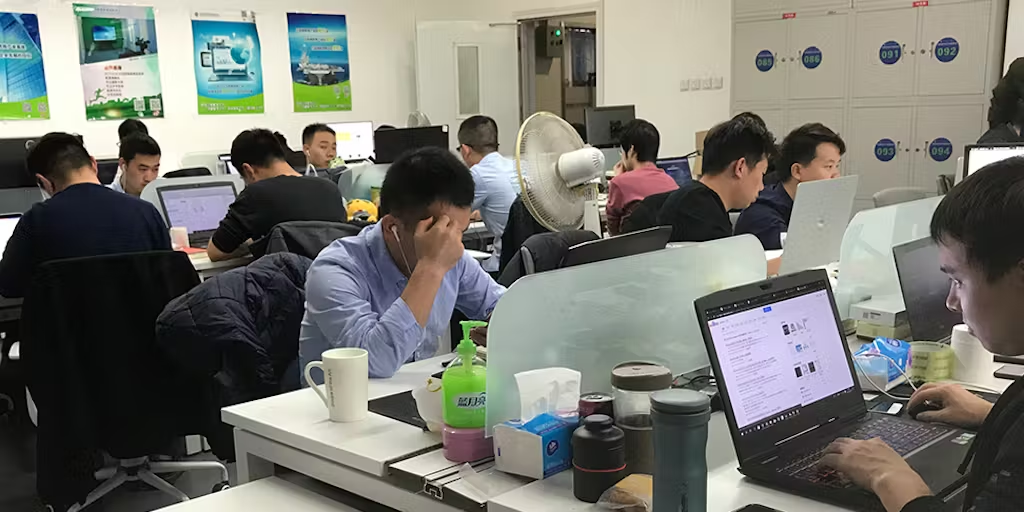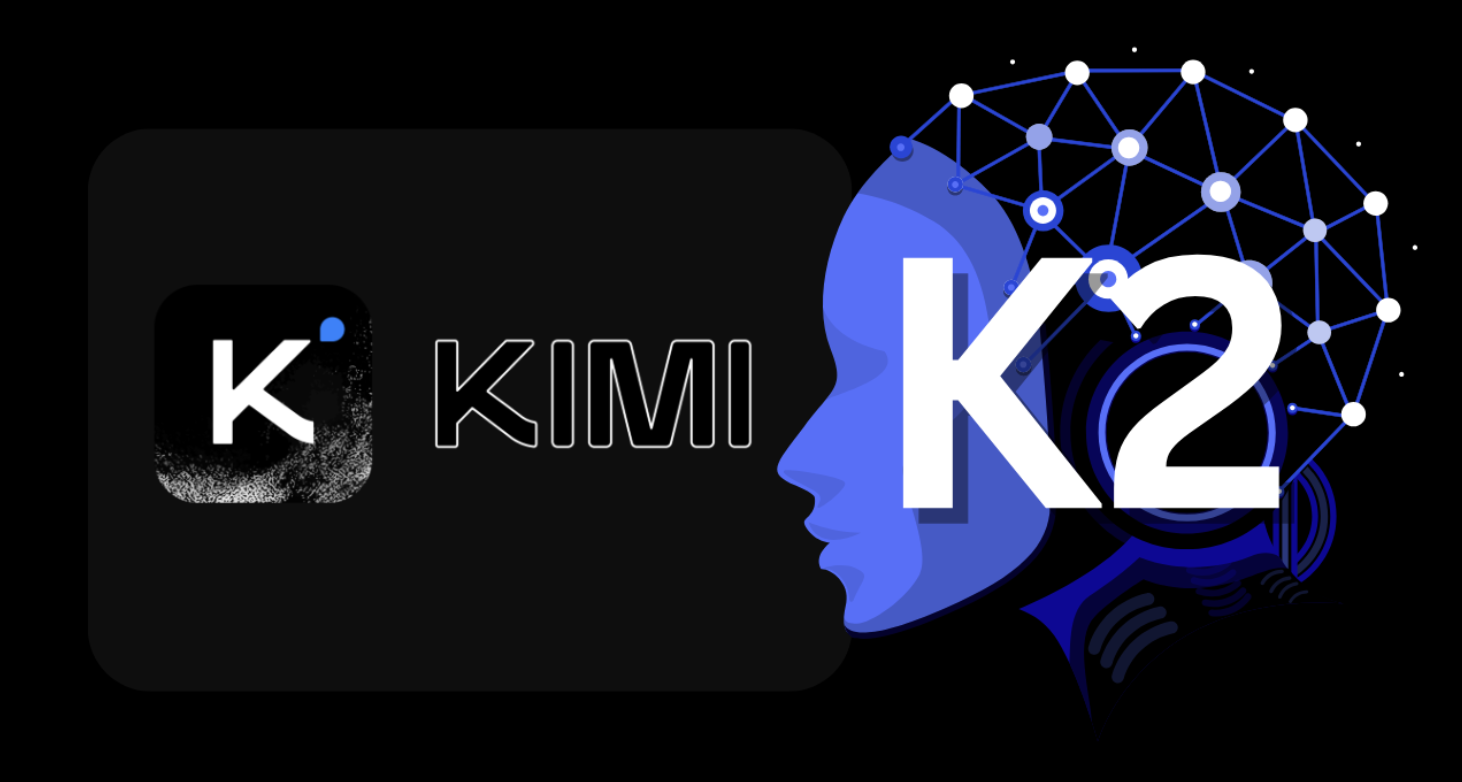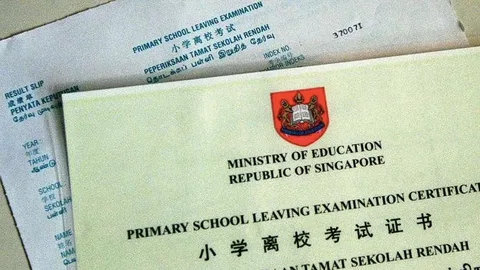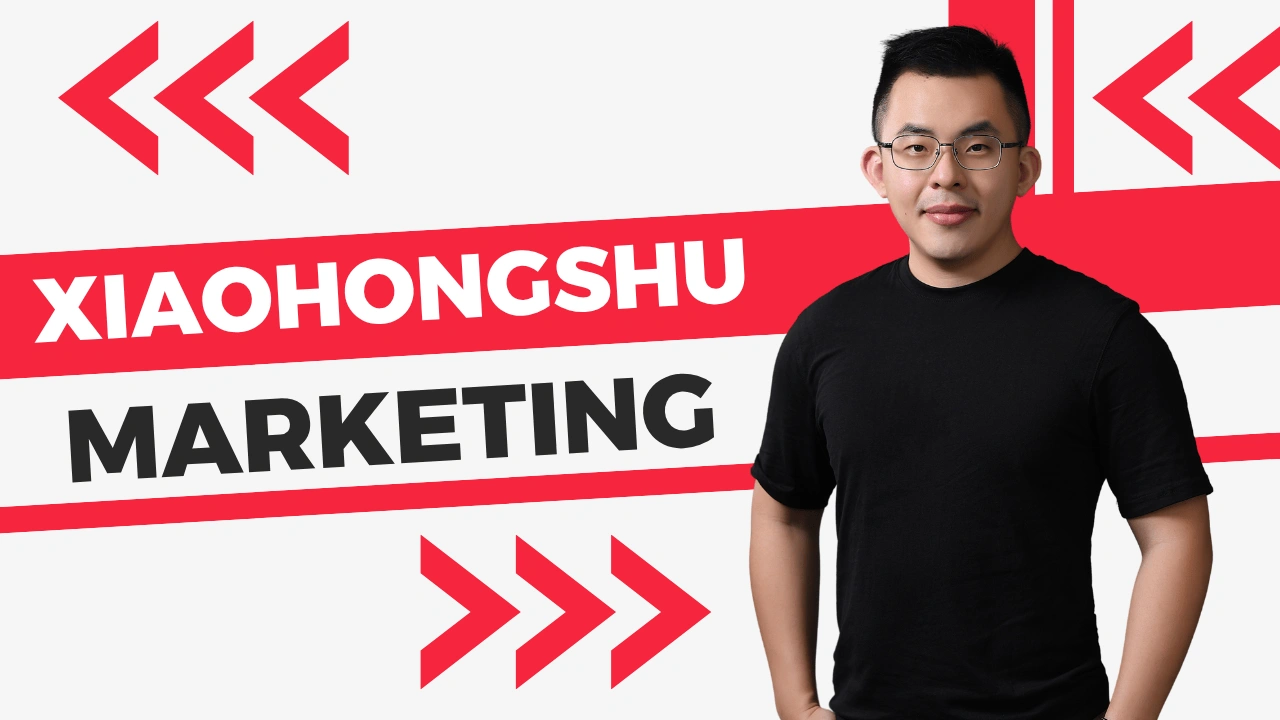Technology
EdTech in Singapore: 150+ Companies Driving $180M Digital Learning Revolution

Singapore’s classrooms look nothing like they did ten years ago. Students tap tablets instead of turning pages EdTech in Singapore. Teachers track progress through dashboards, not gradebooks. The Lion City has become Asia’s testing ground for educational technology that’s reshaping how we learn.

The transformation didn’t happen by accident. Singapore invested $1.2 billion in educational technology between 2019-2023. That money created opportunities for edtech companies Singapore to build, test, and scale their products. The results speak for themselves – student engagement is up 40%, and learning outcomes keep improving.
But here’s what most people don’t know about edtech in Singapore. It’s not just about fancy gadgets or flashy apps. The real story is how this small island nation created the perfect storm for educational innovation. Government backing, tech-savvy teachers, and parents who demand results – that combination is rare anywhere else in the world.
What Makes Singapore the EdTech Capital of Southeast Asia?
Singapore didn’t stumble into becoming an edtech in singapore. The government planned it methodically. The Smart Nation initiative launched in 2014 with one clear goal – make Singapore the world’s first smart city. Education was a cornerstone of that vision.
The Ministry of Education rolled out the EdTech Masterplan 2030. Every school got high-speed fiber internet. Teachers received training on digital tools. Students started learning computational thinking from Primary 1. That’s six-year-olds learning to code.
The results came fast. Singapore’s PISA scores stayed at the top globally while integrating more technology than any other education system. Educational technology companies Singapore found something special here – a market that embraces new tools without sacrificing academic excellence.
Three factors make Singapore irresistible to education technology providers Singapore:
Government Support That Actually Works Singapore doesn’t just talk about supporting innovation. The government provides real funding through programs like IMDA’s Tech for Good initiative. Startups get grants up to $500,000 to develop educational solutions.
Teachers Who Want to Learn Singapore teachers are different. Edtech in singapore They see technology as a tool to be mastered, not feared. The government sends teachers to Silicon Valley for training. They come back excited to try new approaches in their classrooms.
Parents Who Demand Results Singapore parents spend more on education per child than anywhere else in Asia. They want proof that technology actually helps their kids learn better. This creates natural market pressure for quality over flashy features.
The Singapore EdTech Landscape: Who’s Building What
Established Giants Leading the Charge
Creative Technology started making sound cards in the 1980s. Now they’re one of Singapore’s biggest educational technology companies Singapore. Their language learning labs serve over 100,000 students across 15 countries. That’s what smart business evolution looks like.
ST Engineering might surprise you. Most people know them for defense and aerospace. But their education arm has quietly become a major player. They build learning management systems that serve 300+ schools across Southeast Asia.
Panasonic Singapore created Smart Paper – an AI system that grades handwritten work instantly. Teachers save 3 hours per week on marking. Students get feedback before they forget what they wrote. Sometimes the best educational software companies Singapore come from unexpected places.
Rising Stars: Singapore EdTech Startups Making Waves
The startup scene buzzes with activity. These aren’t garage operations with big dreams and empty pockets. Edtech in singapore startups launch with solid funding and clear market validation.
Geniebook raised $16.6 million to build personalized AI tutoring for math and science. Their secret sauce? The AI adapts to how Singapore students actually learn, not how Western algorithms think they should learn. They’ve got 50,000+ active users and expanding into Malaysia and Indonesia.
Whizz Education turns math homework into gaming sessions. Kids play their way through multiplication tables and algebraic equations. Parents report homework battles turning into begging for more screen time. That’s the kind of problem we like to have.
KnowRe uses data analytics to spot learning gaps before students fall behind. Teachers get dashboards showing exactly where each student struggles. Edtech in singapore No more guessing why Johnny can’t do fractions – the data tells the whole story.
Codup focuses on coding education for primary school students. They’ve partnered with 150+ Singapore schools to teach computational thinking. Kids build games, not just learn syntax. The difference shows in their engagement scores.
These learning technology companies Singapore share common DNA:
- Mobile-first design for smartphone-heavy Singapore
- Multilingual support for diverse classrooms
- Real-time analytics that parents and teachers actually use
- Local content that matches Singapore’s curriculum standards
Breaking Down the Singapore EdTech Market by Segments
Learning Platform Companies Singapore: The Infrastructure Layer
Think of learning platforms as the operating system for digital education. These aren’t just digital textbooks uploaded to the web. We’re talking full ecosystems where students learn, teachers track progress, and parents stay informed about their child’s education journey.
Market leaders include:
- Google Classroom – 280+ Singapore schools
- Microsoft Teams for Education – 220+ schools
- Schoology (PowerSchool) – 180+ schools
- Local player Koobits – 120+ schools
The competition benefits everyone. Schools negotiate better pricing. Features improve constantly. Students get more engaging experiences. That’s capitalism working exactly how it’s supposed to work.
Koobits deserves special attention. This homegrown platform started in Singapore and now serves 500,000+ students across Southeast Asia. They understand local teaching methods better than global giants. Sometimes knowing your neighborhood beats having the biggest marketing budget.
Educational App Companies Singapore: Learning in Your Pocket
Mobile apps rule edtech in singapore landscape. With 98% smartphone penetration, learning apps live in every pocket. But not all educational app companies Singapore succeed. The winners focus on specific subjects or skills rather than trying to be everything to everyone.
Top performing categories:
- Language learning (English, Mandarin, Malay, Tamil)
- STEM subjects (math, science, coding)
- Test preparation (PSLE, O-levels, A-levels)
- Soft skills (critical thinking, creativity, collaboration)
Success stories worth studying:
Duolingo Singapore created content specifically for local language learning needs. They added Singlish phrases and local context. Global downloads in Singapore increased 200% after localization. That’s the power of thinking globally but acting locally.
Photomath became the go-to homework helper for Singapore students. Point your phone at a math problem, get step-by-step solutions. Parents love it because they can help with homework again. Teachers initially worried about cheating but learned to use it as a teaching tool.
Khan Academy partnered with Singapore’s Ministry of Education to create localized math content. They adapted problem sets to match local teaching methods. The result? Higher completion rates than their global average.

Digital Education Companies Singapore: Beyond the Classroom Walls
COVID-19 accelerated trends that were already brewing. Digital education companies Singapore had to scale fast when schools shut down. Some thrived. Others couldn’t handle the pressure. The survivors learned valuable lessons about building resilient educational technology.
Zoom became Singapore’s default classroom overnight. edtech in singaporeSchools that never heard of video conferencing were running daily lessons within a week. Teachers learned to manage breakout rooms faster than they learned to use overhead projectors decades earlier.
Microsoft Teams Education saw adoption jump 500% during circuit breaker periods. Schools that resisted cloud computing suddenly needed everything online immediately. The pandemic pushed five years of digital transformation into five months.
But hardware mattered too. Apple Singapore provided iPads to schools through government programs. Lenovo created education-specific laptops built to survive elementary school handling. HP developed classroom management software that let teachers control student devices remotely.
The lesson? Successful digital education companies Singapore don’t edtech in singapore just build software. They think about the entire ecosystem – hardware, connectivity, training, support, and long-term sustainability.
Education Technology Trends Singapore Can’t Ignore
Artificial Intelligence Gets Personal
AI in Singapore classrooms isn’t science fiction anymore. It’s Monday morning reality. Students get personalized learning paths that adapt in real-time. Teachers receive insights that would have taken weeks to gather manually.
Century Tech uses AI to create custom learning journeys for each student. Struggling with algebra? The system creates more practice problems with different approaches. Mastered fractions early? Here’s some pre-calculus to explore. The AI never gets tired of adapting.
Smart Paper by Panasonic reads handwritten assignments and provides instant feedback. Teachers save 4+ hours weekly on marking. Students get corrections while their edtech in singapore thinking is still fresh. That’s AI solving real classroom problems.
Netease brought their Chinese AI tutoring system to Singapore schools. The AI speaks Mandarin, English, and can switch between simplified and traditional Chinese characters. Multilingual AI tutoring is becoming table stakes for the Singapore market.
Virtual and Augmented Reality: Making Abstract Concepts Tangible
VR headsets are showing up in Singapore science labs and history classrooms. Students dissect virtual hearts without the mess. They walk through ancient Rome without time travel. Abstract concepts become hands-on experiences.
zSpace provides 3D learning environments for STEM subjects edtech in singapore. Students manipulate molecular structures in mid-air. They explore the solar system from Mars’ perspective. The “wow factor” wears off quickly, but the learning sticks around longer.
Google Expeditions took Singapore students on virtual field trips to Mount Everest and the Great Barrier Reef. Geography lessons became adventure experiences. Teachers reported higher engagement and better retention compared to textbook-based lessons.
ClassVR created curriculum-aligned content specifically for Singapore schools. Students experience the water cycle from inside a cloud. They witness photosynthesis at the cellular level. Science becomes visceral instead of theoretical.
The key insight? VR works best when it shows students things they can’t experience otherwise. Virtual field trips to the Amazon rainforest make sense. Virtual math lessons usually don’t add value over good animation.
Blockchain: Securing Educational Credentials
Singapore leads Asia in blockchain-based educational credentials. edtech in singapore The government issues digital certificates that employers worldwide trust. Students earn verified micro-credentials for specific skills. The paper diploma era is ending.
SkillsFuture Singapore uses blockchain to track lifelong learning journeys. Workers earn verified badges for completing courses. Employers see skills, not just degrees. The traditional resume might become obsolete within a decade.
OpenCerts by GovTech Singapore creates tamper-proof educational certificates. Universities can issue digital diplomas that can’t be forged. International employers don’t need to verify credentials through slow bureaucratic processes.
This matters for Singapore learning technology startups building certification platforms. Students want proof their online learning counts toward career goals. Employers need confidence in digital credentials. Blockchain solves both problems simultaneously.
Challenges Facing Singapore’s EdTech Ecosystem
The Teacher Training Mountain
New technology means nothing if teachers can’t use it confidently. Many Singapore educators still struggle with digital tools despite extensive training programs. The learning curve feels steep for teachers who’ve taught successfully for decades using traditional methods.
The Ministry of Education runs constant professional development programs. Teachers attend workshops, online courses, and peer learning sessions. But changing teaching habits takes time. Some educators adapt quickly. Others need more support and patience.
Successful edtech service providers Singapore now include teacher training as standard service. It’s not enough to sell software and walk away. Companies must teach the teachers, provide ongoing support, and create user-friendly interfaces that don’t require computer science degrees to operate.
Apple Singapore created Teacher Learning Centers where educators learn iPad integration techniques. Microsoft offers free certification programs for Office 365 Education tools. Google provides ongoing training for Classroom administrators.
Digital Divide: Not Every Home Has High-Speed Internet
Singapore’s wealth creates assumptions about universal technology access. Reality is more complex. Not every family has unlimited high-speed internet and multiple devices for children. The COVID-19 pandemic exposed these gaps when learning went fully online.
Some students fell behind because of technology access, not academic ability. Parents working multiple jobs couldn’t supervise online learning. Siblings shared single devices for simultaneous classes. The digital divide became a learning divide.
Edtech in singapore startups are building offline-capable apps and partnering with telecommunications companies for subsidized data plans. Singtel offers educational data packages at reduced rates. M1 provides free internet to low-income families with school-age children.
Koobits developed offline modes for their math practice app. Students download lessons at school with wifi, then practice at home without internet. Progress syncs when they reconnect. Smart design solves real problems.
Privacy Concerns: Balancing Personalization with Protection
Parents worry about student data collection. Singapore has strict privacy laws, but educational software companies Singapore must balance personalization with protection. The more data apps collect, the better they can customize learning. But more data also means bigger privacy risks.
The Personal Data Protection Act governs how educational technology solutions Singapore handle student information. Companies must prove data security measures before schools approve their products. Startups need legal expertise, not just coding skills.
Parents want transparency about data usage. Which information gets collected? How long is it stored? Who has access? Can it be deleted? These aren’t technical questions – they’re trust questions. Companies that answer clearly build stronger relationships with schools and families.
Government Support: How Singapore Builds Its EdTech Future
Smart Nation Initiative: The Master Plan
The Smart Nation program allocated $19 billion for digital transformation across all sectors. Education received significant funding through multiple channels. This isn’t money thrown at problems – it’s strategic investment with measurable outcomes.
Specific programs supporting edtech in singapore:
- IMDA Tech for Good grants (up to $500,000 per project)
- Startup SG Founder program (funding plus mentorship)
- Education Innovation Fund (for schools testing new solutions)
- SkillsFuture initiatives (for teacher professional development)
The government doesn’t just write checks. They provide sandboxes where edtech companies Singapore can test products with real schools. They connect startups with potential customers. They help successful companies expand regionally.
Enterprise Singapore runs missions to help local edtech businesses Singapore enter new markets. Companies get market research, regulatory guidance, and networking opportunities. The goal is creating regional champions, not just local successes.
Regulatory Framework: Clear Rules for Innovation
Singapore balances innovation encouragement with safety requirements. The regulatory framework provides clarity instead of confusion. Companies know exactly what compliance looks like. This predictability helps startups focus resources on building products instead of guessing regulations.
Key regulatory requirements:
- Personal Data Protection Act compliance for student data
- Cybersecurity Act standards for educational platforms
- Copyright Act considerations for educational content
- Competition and Consumer Act rules for school procurement
The Infocomm Media Development Authority provides detailed guidelines for educational technology companies Singapore. They offer consultation sessions for startups navigating regulatory requirements. Prevention is better than punishment for both companies and students.
Success Stories: Singapore EdTech Companies Going Global
Geniebook: From Singapore Startup to Regional Platform
Geniebook started with a simple observation – Singapore students learn math differently than Western students. Asian teaching methods emphasize practice and mastery. Western approaches focus more on conceptual understanding. The founders built AI that matches local learning styles.
The results came quickly. Students spent more time practicing because the AI adapted to their pace. Teachers got detailed analytics showing exactly where students needed help. Parents saw grades improve and homework battles decrease.
Revenue jumped 300% in two years. The company expanded to Malaysia, Indonesia, and Vietnam. Each market required localization – different languages, currencies, and teaching standards. But the core AI remained effective across cultures.
The key insight? Don’t assume global solutions work everywhere. Sometimes the best path to international success starts with deep local understanding.
Creative Technology: Hardware Giant’s Software Success
Creative Technology dominated computer sound cards for decades. When that market matured, they pivoted into educational audio solutions. Their language learning labs now operate in 15 countries across Asia-Pacific.
The transition wasn’t easy. Hardware companies think differently than software companies. Product cycles, customer relationships, and support models all change. But Creative’s audio expertise translated perfectly to educational applications.
Their language labs feature:
- Crystal-clear audio for pronunciation practice
- Recording capabilities for speaking assessments
- Teacher control systems for classroom management
- Integration with popular language learning software
Schools choose Creative labs because they work reliably for years. Software startups might disappear or get acquired. Creative has been around for 30+ years. That stability matters when schools make long-term technology investments.
ST Engineering: Defense Contractor Builds Learning Systems
ST Engineering’s shift into education surprised many observers. A company known for military hardware doesn’t seem like a natural fit for learning management companies Singapore. But their systems thinking and security expertise proved valuable in educational contexts.
Their learning platform serves 300+ schools across Southeast Asia. Government contracts provided initial stability for research and development investment. Now they compete successfully against edtech in singapore giants.
What they learned about education technology:
- Schools need the same reliability as military systems edtech in singapore
- Security matters as much for student data as defense information
- Training and support determine adoption more than features
- Local partnerships matter more than global brand recognition
Investment and Funding: Where the Money Flows
Venture Capital Landscape
Singapore edtech funding reached record levels in 2023. $127 million flowed into education technology startups Singapore. That represents 180% growth from the previous year. Investors are betting big on the sector’s expansion potential.
Major investment rounds include:
- Geniebook: $16.6M Series A (Vertex Ventures led)
- Koobits: $3.2M seed extension (Golden Gate Ventures)
- Whizz Education: $2.8M Series A (angel investors)
- KnowRe: $1.5M seed round (government co-investment)
Key investor profiles:
- Vertex Ventures: Focuses on local startups with regional expansion potential
- Golden Gate Ventures: Backs companies solving Southeast Asian education challenges
- Sequoia Capital India: Provides Series B+ funding for international scaling
- EDBI: Singapore’s sovereign wealth fund arm investing in strategic sectors
Government Co-Investment Programs
Singapore’s government co-invests alongside private venture capitalists through programs like SEEDS Capital and Startup SG. This approach reduces risk for private investors while ensuring startups have adequate runway for growth and development.
Typical funding progression:
- Seed stage: $100K-500K (local angels plus government matching)
- Series A: $1M-5M (regional VCs with government participation)
- Series B+: $5M+ (international investors for global expansion)
The government doesn’t just provide money. They offer mentorship, market access, and regulatory guidance. Startups get smart capital that comes with valuable networks and expertise.
Corporate Venture Arms
Singapore’s major corporations are building venture investment arms focused on educational technology. This creates opportunities for startups to find both funding and distribution partnerships.
Notable corporate investors:
- Singtel Innov8: Invests in edtech in singapore platforms with mobile-first approaches
- DBS Bank: Backs fintech education and financial literacy startups
- CapitaLand: Supports proptech solutions for smart campus development
- Temasek Holdings: Strategic investments in education infrastructure
These partnerships offer more than money. Startups gain access to established customer networks, distribution channels, and market expertise. Corporate parents provide credibility that helps when approaching schools and government buyers.
Future Predictions: Where Singapore EdTech Heads Next
Regional Expansion Hub Strategy
Edtech in singapore companies increasingly use the city-state as a launching pad for Southeast Asian expansion. The region contains 650 million people with growing middle classes demanding better educational opportunities for their children.
Target markets and their characteristics:
- Indonesia: 50 million school students, mobile-first adoption
- Malaysia: Strong English proficiency, government digitalization support
- Vietnam: Rapidly growing economy, heavy education investment
- Thailand: Large private school market, international curriculum demand
- Philippines: High English skills, strong remittance economy supporting education spending
Local adaptation remains crucial for success. Each market has different languages, currencies, regulatory requirements, and cultural learning preferences. Singapore companies that succeed regionally invest heavily in localization rather than assuming one-size-fits-all approaches work everywhere.
Skills-Based Learning Revolution
Traditional degree programs are losing relevance for many career paths. Employers care more about specific capabilities than institutional credentials. Edtech in singapore ecosystem is building platforms that teach targeted skills rather than broad academic subjects.
High-demand skill areas:
- Data analysis and visualization
- Digital marketing and social media
- Programming and software development
- Project management and agile methodologies
- Financial literacy and investment basics
Universities are partnering with learning technology providers Singapore to offer micro-credentials and certificate programs. Students build custom skill portfolios instead of following rigid degree requirements. This flexibility matches how modern careers actually develop.
SkillsFuture Singapore already provides credits for citizens to pursue lifelong learning. The next step involves better integration between formal education and professional skill development. Students will graduate with both degrees and verified job-ready capabilities.
AI-Powered Personalized Education
Every Singapore student will have access to AI tutoring by 2027. That’s not speculation – it’s part of the official national education technology strategy. Digital education companies Singapore are building the infrastructure and content libraries needed for truly personalized learning at scale.
AI capabilities coming soon:
- Real-time learning path optimization based on student performance
- Automated content generation matching individual learning styles
- Predictive analytics identifying students at risk of falling behind
- Natural language tutoring available 24/7 in multiple languages
- Emotional intelligence tracking to optimize learning conditions
The goal isn’t replacing teachers. AI handles routine tasks like grading, progress tracking, and content recommendations. Teachers focus on creative instruction, emotional support, and complex problem-solving guidance. Human skills become more valuable, not less.
How to Enter Singapore’s EdTech Market: A Practical Guide
Understanding Local Market Dynamics
Edtech in singapore market looks open from the outside edtech in singapore but has subtle barriers that trip up newcomers. Schools prefer vendors with local track records. Parents want proof that solutions work for Singapore’s unique educational culture. Government buyers follow strict procurement processes.
Essential first steps:
- Partner with local education consultants who understand school decision-making
- Pilot programs with one school to build case studies and references
- Join edtech in singapore association for networking and market intelligence
- Attend local education conferences to build relationships before selling
Success stories travel fast in Singapore’s tight-knit education community. One satisfied school principal becomes your best marketing asset. But failure stories travel even faster. Get your first implementation absolutely right before expanding.
Building Strategic Partnerships
Competition and collaboration coexist in edtech in singapore landscape. Companies often partner on larger projects rather than fighting zero-sum battles. The market rewards cooperation over cutthroat competition.
Valuable partnership types:
- System integrators who handle technical implementation and support
- Content creators who develop local curriculum-aligned materials
- Teacher training organizations who provide professional development
- Hardware vendors who supply devices and infrastructure
Koobits partnered with Marshall Cavendish to create math content matching Singapore’s teaching methods. The textbook publisher provided curriculum expertise. Koobits contributed digital platform capabilities. Both companies benefit from the collaboration.
Navigating Regulatory Requirements
Singapore’s regulations are strict but clear. Companies that understand requirements upfront save time and money compared to those who try to figure things out later. Hire local legal counsel familiar with education sector requirements from day one.
Critical compliance areas:
- Data protection: PDPA requirements for student information handling
- Content standards: MOE guidelines for educational material approval
- Cybersecurity: Mandatory security measures for school-facing systems
- Accessibility: Requirements for students with special learning needs
The government offers consultation sessions for companies navigating regulatory requirements. Use these resources. Prevention costs less than fixing problems after launch.
Edtech in singapore journey is accelerating, not slowing down. The combination of government vision, private investment, and educational excellence creates perfect conditions for continued growth. Whether you’re building the next breakthrough learning platform or investing in education’s digital future, Singapore offers the best launching pad in Asia
The infrastructure is built. The market is ready. The global expansion opportunities are massive. Singapore’s educational technology companies are writing the playbook that the rest of Asia will follow. The question isn’t whether digital learning will dominate – it’s whether you’ll be part of building that future.
Technology
The Rise of Custom Chatbots in Modern Customer Engagement

Today’s customers expect immediate responses, personalized support, and smooth digital experiences. Unfortunately, generic chatbot tools often fall short-they respond with limited knowledge, escalate issues too late, or deliver bland, scripted answers. These gaps lead to lost trust, wasted time, and missed revenue opportunities.
Custom chatbots change this dynamic. By aligning conversational design with your product, data, and business outcomes, a tailored bot becomes a high-performing channel for engagement, retention, and growth. For product-led teams, especially those serving the US market, a custom-built chatbot can significantly improve onboarding, reduce friction, and clearly demonstrate ROI.
This guide breaks down how custom bot development works, where it adds the most value, and how to build an MVP that scales into a long-term, reliable customer engagement tool.
Why Growth Teams Need Custom Chatbots
Pre-built chatbots answer basic FAQs-but they rarely drive real business impact. Growth-focused teams need results: higher conversions, reduced support load, and smoother user flows. A custom bot delivers this by enabling you to:
- Connect conversation paths to your product funnel and nudge users toward key decisions.
- Embed domain knowledge, compliance rules, and brand tone for consistent, accurate replies.
- Integrate with CRMs, analytics, and telemetry systems so the bot becomes a source of product intelligence.
Instead of acting as a simple answering tool, the bot becomes part of the user journey-helping acquire, retain, and convert customers. As generative AI adoption accelerates, more teams are exploring these capabilities to elevate customer experience.
Core Technical Decisions You’ll Need to Make
Your technical architecture determines how reliable, scalable, and cost-effective your chatbot will be. Expect to make choices in areas such as:
1. Model Strategy
- Rule-based bots for predictable interactions
- RAG (Retrieval-Augmented Generation) for accurate, context-aware responses
- Full LLM-driven systems for dynamic, conversational depth
RAG is often the sweet spot, blending precision with flexibility.
2. NLP Stack
Popular options include:
- Rasa
- Dialogflow
- Microsoft Bot Framework
- Custom pipelines built with open-source transformer models
3. Data Infrastructure
Define:
- Your sources of truth (product docs, support guides, customer records)
- Update frequency
- Version control practices
4. Integrations
Connect with:
- CRM platforms
- Support ticketing tools
- Product analytics
- Authentication systems
- Payment gateways
5. Safety & Moderation
Put in place:
- Guardrails
- Keyword filters
- Escalation logic
- Policies for sensitive or regulated responses
Lightweight tech stacks work for simple FAQ bots, while industries like finance and healthcare need stricter governance standards.
Business Results You Can Achieve
Measurable metrics help justify investment and guide improvements. Common KPIs include:
- Faster first-response time
- Higher self-service resolution rates
- Increased trial-to-paid conversions
- Lower average support cost per ticket
- Improved NPS or CSAT for bot interactions
- Higher completion rates for actions like claims, bookings, or forms
- Better escalation accuracy
MVP Development Checklist
Start small, prove value, and expand. Your MVP should include:
- Clearly defined user journeys (e.g., onboarding, billing, returns)
- A curated knowledge base plus labeled intent samples (200-1,000 examples)
- A selected tech stack-Rasa/Dialogflow + LLM + RAG
- Strong escalation rules and human-handoff experiences
- Event tracking across all bot interactions
- A/B tests comparing bot-assisted vs. non-assisted flows
- Early-stage human review to correct inaccuracies
Conversation Design Principles That Lead to Success
Effective conversation design is what separates helpful bots from frustrating ones. Follow these guidelines:
- Keep prompts concise and goal-oriented
- Unfold information gradually
- Cite sources or provide context when giving factual replies
- Always offer a quick path to a live agent
- Use session memory to avoid repetitive questions
Good design directly influences conversion, retention, and user satisfaction.
When to Use Generative AI-And When Not To
Generative AI enhances natural, human-like conversations, but it must be used responsibly.
Best Use Cases
- Summaries
- General guidance
- Multi-step explanations
- Personalized recommendations
Avoid LLM Generation For
- Regulated communications
- High-stakes transactional replies
- Anything requiring strict accuracy
Always use RAG for verified answers, log all outputs, and maintain a human review loop to minimize risk.
Cost, Team Structure, and Time-to-Value
A realistic development timeline for US-focused product teams:
- MVP Build (8-12 weeks): Core flows + one system integration
- Production Rollout (3-6 months): Multi-channel deployment + analytics
- Mature Program (6-12 months): Personalization, advanced tuning, deep CRM integration
Costs vary depending on compliance needs and scope. Leveraging open-source tools and cloud-based LLMs can reduce upfront investment.
Operational Best Practices
To keep your chatbot effective:
- Review low-confidence queries weekly
- Audit escalation logs monthly
- Conduct regular red-team tests to detect unsafe behavior
- Maintain a clear record of knowledge updates
- Adjust intents and flows as your product evolves
This ensures reliability and prevents performance drift.
How to Measure ROI for a Custom Chatbot
Use a structured approach:
- Establish baselines (support volume, conversion rate, time-to-resolution)
- Launch a controlled pilot in a single funnel
- Compare user cohorts-bot-assisted vs. non-assisted
- Calculate lift, then estimate annualized impact
Companies often see measurable ROI within months when switching repetitive tasks and guided workflows to chatbots.
Common Mistakes and How to Prevent Them
- Launching too broadly: Start narrow, prove value, then expand
- Weak escalation design: Always ensure smooth transitions to humans
- Lack of instrumentation: Track every intent and action
- Over-reliance on LLM output: Always layer RAG + human review
- Ignoring compliance: Document data flows and retention policies
Next Steps for Your Team
If you’re leading innovation or product development:
- Select one high-impact funnel for the bot to own next quarter
- Build a prototype using sample data
- Measure your baseline
- Iterate with feedback and analytics
- If necessary, partner with experts in conversation design, RAG systems, and product analytics
Conclusion
A custom-built chatbot does more than answer questions-it supports conversions, reduces friction, and turns conversations into powerful product insights. When backed by strong design, the right metrics, and continuous iteration, your bot becomes an essential growth engine that evolves alongside your product.
Technology
Kimi K2 Thinking Surpasses GPT-5? Meet the Ultra-Affordable Trillion-Parameter AI Model

What if the strongest AI system available today didn’t require enterprise-level budgets, closed-door licensing, or premium subscriptions? Imagine an AI model powerful enough to challenge proprietary giants like GPT-5 and Claude Sonnet 4.5-yet open source, customizable, and inexpensive to operate.
That’s exactly what Kimi K2 Thinking delivers. Built with a staggering one trillion parameters, this next-generation model can tackle everything from PhD-level mathematics to complex multi-step reasoning-all while remaining accessible to developers, researchers, and businesses at just a fraction of the usual cost.
World of AI recently explored why Kimi K2 Thinking is quickly earning recognition as one of the most promising open source models to date. Its advanced reasoning abilities, seamless integration across workflows, and highly adaptable architecture make it a standout in a crowded AI landscape. But is it truly the best open-source competitor to proprietary systems? And are there downsides you should know about?
Here’s a complete look at why many consider Kimi K2 Thinking the next major disruptor in the AI space.
Why Kimi K2 Thinking Stands Out
TL;DR-Key Highlights
- One trillion parameters, offering reasoning and tool-use capabilities that rival GPT-5 and Claude 4.5.
- Exceptional performance across coding, logic, and advanced problem-solving benchmarks-including PhD-level tasks.
- Open source, meaning full access to model weights, local deployment, and unrestricted customization.
- Versatile features ranging from long-horizon planning to creative generation and front-end development.
- Highly affordable, with competitive token pricing and free trial credits via Kilo Code API.
At its core, Kimi K2 Thinking is built to perform rigorous reasoning with precision. It handles step-by-step analysis, complex workflows, and extended tasks while maintaining logical cohesion. And because it’s fully open source, users can run it locally, integrate it into custom pipelines, or modify its architecture without limitations.
This combination of power, flexibility, and cost-effectiveness positions Kimi K2 Thinking as a compelling alternative to expensive proprietary AI systems.
Benchmark Performance: How Kimi K2 Thinking Competes
Kimi K2 Thinking’s performance across industry benchmarks shows just how versatile and capable this model is. A few standout areas include:
1. Advanced Reasoning
In tests such as Agentic Task and HLE Browser Comp, the model demonstrates exceptional multi-step reasoning and decision-making. It is able to interpret complex instructions, break them down, and execute them accurately.
2. Autonomous Tool Usage
One of the model’s most impressive strengths is its ability to manage 200-300 sequential tool calls, enabling it to run long, intricate workflows with little or no human input-crucial for automation, research, and engineering tasks.
3. Coding Proficiency
Kimi K2 Thinking performs strongly in coding benchmarks such as Sway Multilingual and Live Code Bench, making it an invaluable assistant for developers. It handles debugging, software architecture, and multilingual code generation with efficiency.
4. Complex Problem-Solving
The model can tackle high-difficulty tasks-including PhD-level mathematics with efficiency and accuracy. This positions it as one of the most capable open-source AI models for academic, scientific, and research-driven work.
These achievements highlight Kimi K2 Thinking’s potential as a top-tier open-source alternative to premium proprietary models.
Primary Features and Benefits
Kimi K2 Thinking is built with versatility in mind, enabling high-performance use cases across many industries. Some of its most noteworthy capabilities include:
Strategic Long-Range Planning
The model can generate detailed, step-by-step plans for long-term projects-ideal for research, engineering tasks, or business strategy.
Continuous Skill Growth and Adaptability
It dynamically updates its reasoning as new information is introduced, allowing it to remain accurate and relevant throughout evolving scenarios.
Creative Output Generation
Kimi K2 Thinking can produce a wide range of creative content, including:
- Entire novels
- SVG illustrations
- Custom browser-based operating systems
- Playable mini-games and Minecraft-style clones
Its creativity rivals that of top proprietary models.
Advanced Web Development
The model demonstrates strong proficiency in:
- HTML
- React
- Component-based front-end development
It can generate landing pages, dashboards, and UI components with impressive consistency.
These features make Kimi K2 Thinking suitable for creative teams, software engineers, product designers, and many other professionals.
Affordability and Accessibility: A Major Advantage
One of Kimi K2 Thinking’s strongest selling points is its cost-effectiveness. Unlike proprietary systems that charge high subscription fees, this model is open source-with weights freely available for local deployment through tools like Ollama and LM Studio.
Pricing Structure
- $0.60 per million input tokens
- $2.50 per million output tokens
Additionally, the Kilo Code API includes $25 in free credits, making it easy to test the model before committing financially.
This pricing model democratizes access to advanced AI technology, enabling small businesses, independent developers, and educational institutions to leverage high-performance AI without financial strain.
Real-World Use Cases Across Industries
Because of its flexibility and sheer scale, Kimi K2 Thinking can support a wide range of professional workflows:
Creative Workflows
- Writing articles, novels, scripts
- Generating artwork or SVG graphics
- Building interactive applications
- Producing unique design concepts
Software Engineering
- Building SaaS landing pages
- Developing complex React components
- Creating browser-based tools
- Supporting game development
Strategic and Research Planning
- Long-term roadmap creation
- Scenario modeling and risk analysis
- Data-driven research planning
- Structured knowledge synthesis
Its powerful reasoning capabilities help users complete tasks faster and with greater precision.
Limitations to Consider
While impressive, Kimi K2 Thinking is not without its drawbacks. Some areas where users might find limitations include:
1. Occasional Output Over-Simplification
Certain front-end designs or complex UIs may require manual refinement to achieve professional polish.
2. Variability in Generated Applications
Apps or tools produced by the model may lack the reliability or feature completeness of those generated by top proprietary models.
3. Requires Technical Setup for Local Hosting
Because the model is open source, users must configure local environments or hosting solutions-this can be a barrier for beginners.
Despite these limitations, the benefits flexibility, affordability, and raw capability often outweigh the drawbacks, especially for those who prefer open-source control and customization.
Final Verdict: Is Kimi K2 Thinking the Best Open Source Model Today?
Kimi K2 Thinking is arguably one of the most compelling open-source AI models released to date. With one trillion parameters, powerful reasoning abilities, strong coding performance, and a remarkably affordable cost structure, it offers a level of capability previously reserved for expensive proprietary systems.
For developers, researchers, businesses, and tech enthusiasts seeking a high-performance AI that doesn’t require enterprise-level budgets, Kimi K2 Thinking stands out as an exceptional choice.
It may not completely replace premium proprietary models in every area, but it unquestionably reshapes what open-source AI can achieve and sets a new benchmark for the industry.
Technology
Samsung’s Triple-Fold Phone: New Price Whispers and a December 5 Reveal Around the Corner

Only a few days ago, we were talking about one of the boldest tech rumors of 2025-Samsung preparing a device that folds twice, blurring the line between phone, notebook, and tablet. Early leaks painted the picture of extreme thinness (4.2mm when opened) and an equally extreme price of $3,000.
But less than two weeks later, new intelligence suggests a major twist: Samsung might be rethinking the cost before the product even goes official.
With the anticipated December 5 launch event now just days away, the latest leaks, manufacturing clues, and spec sheets give us a much sharper idea of what to expect-and the possibility that Samsung is aiming for more than headlines… they’re aiming for customers.
The Latest Buzz: A More ‘Possible’ Starting Price?
When rumors about this device first began circulating, it was described as Samsung’s ultra-luxury tech, the kind of product that exists to impress, not to sell. Analysts repeatedly referenced a $3,000 expected entry price (around £2,400), which felt believable for a gadget carrying three displays and two precision folding joints.
That story has now evolved. Import-linked sources and supply chain watchers are now pointing to a new opening figure of $2,499 (around £2,000).
Yes, $2,500 still falls firmly in the premium bracket-notably higher than the Galaxy Z Fold 7’s $1,999-but it removes the device from the “abstract luxury” category and places it in the “painful but plausible” category. The shift also positions it aggressively against Huawei’s tri-fold device, which currently costs much more in the markets where it is sold. Samsung’s move hints at competitive intent, not experimentation alone.
Countdown Confirmed: December 5 Is the Day All Signs Agree On
Multiple leak clusters tracing back to Korean news outlets and Asian manufacturingpartners now line up on one date: December 5, 2025.
Samsung is expected to host a niche-focused Unpacked showcase, likely staged in Seoul, where the company will emphasize the mechanical breakthroughs behind the double-hinge and triple-screen construction rather than aiming for mainstream buzz.
Not for the Whole World-Yet
The first release wave is expected to be strictly regional, launching initially in:
- South Korea
- China
This limited reach appears to be intentional, driven by two realities:
- Production Bottleneck: The new triple internal OLED + Ultra-Thin Glass panels are reportedly difficult to manufacture at scale, with early unit estimates landing between 50,000 to 100,000 devices in the first batch.
- Durability Trial Run: Samsung seems to be treating Korea and China as real-world proving grounds, collecting performance data on hinge resilience, glass stress, and long-term folding wear before expanding globally, possibly mid-2026.
Fold Format Decoded: Why Samsung Went Inward This Time
The new device uses an inward-bending structure, often referred to in leaks as “G-Fold layout,” meaning both sides fold inward like pages closing on each other.
- Closed Mode: Acts like a regular smartphone with a 6.5-inch front panel
- Open Mode: Extends into a 10-inch tablet-scale canvas
This approach differs from outward-wrapping tri-phone concepts. Samsung’s inward choice continues its strategy of shielding the soft flexible display surface from accidental knocks, grit, keys, and drops-a philosophy refined over six generations of foldable development.
Thickness and Portability: Slim When You Need It, Stacked When You Don’t
- Unfolded depth: 4.2 mm, thinner than most premium tablets
- Folded depth: ≈14mm, thicker than normal flagship phones, but still pocket-friendly for many users, considering the expanded screen payoff
Under the Hood: Flagship Specs, Foldable Class
Samsung knows the price alone sets expectations, so the leaked hardware list reads like a no-holds-barred powerhouse:
Displays
- Internal screen: 10.0″ LTPO OLED, 120Hz, 1,600-nit boost
- External cover: 6.5″ OLED, 120Hz, 2,600-nit high-sun mode
Processing & Multitasking
- Chip: Snapdragon 8 Elite Gen 5 (3nm)
- Memory: 16GB LPDDR6
- Storage: 512GB / 1TB UFS 4.1 speeds
Camera System
- Primary sensor: 200MP Samsung ISOCELL HP9
- Wide angle: 50MP
- Zoom lens: 10MP at 3× optical clarity (expected)
Power & Charging
- Cell capacity: 5,600mAh combined stack
- Charging: 45W wired + wireless support
Technical Summary
| Component | Expected Details |
| Announcement | December 5, 2025 |
| Estimated Entry Price | ~$2,499 |
| Main AR Display | 10.0″ OLED at 120Hz |
| Cover Display | 6.5″ OLED (2,600 nits) |
| Processor | Snapdragon 8 Elite Gen 5 |
| System Memory | 16GB |
| Main Camera | 200MP + 50MP UW + 10MP 3× |
| Battery | 5,600mAh |
| Body Depth | 4.2mm (expanded) |
Final Outlook: A Bold Bet That Might Pay Off
This tri-fold phone has the potential to be Samsung’s most daring mobile hardware shift since the first Galaxy Fold. The rumored price rethink, combined with early sales volume targeting Asia’s most foldable-ready audiences first, hints at a calculated launch rather than a concept stunt.
-
Blog4 months ago
Wedding day horror: Groom falls to death at VOCO Orchard Hotel on Wedding Day
-

 Education6 months ago
Education6 months agoSingapore JC Ranking: A Complete Guide for Students
-

 Food2 months ago
Food2 months agoYi Dian Dian Bubble Tea Singapore: Menu, Outlets & Try Drinks
-

 Blog6 months ago
Blog6 months agoBest of SG with Singapore Rediscover Voucher
-

 Business6 months ago
Business6 months agoWhat to Expect During PSLE Marking Days 2023
-

 Digital Marketing3 months ago
Digital Marketing3 months agoHow to Run Effective Xiaohongshu Advertising Campaigns
-

 Digital Marketing3 months ago
Digital Marketing3 months agoWhy Xiaohongshu Ads Are a Must for Reaching Chinese Consumers
-

 Lifestyle3 months ago
Lifestyle3 months agoNew Mempari Beach: A Hidden Paradise in Lombok




